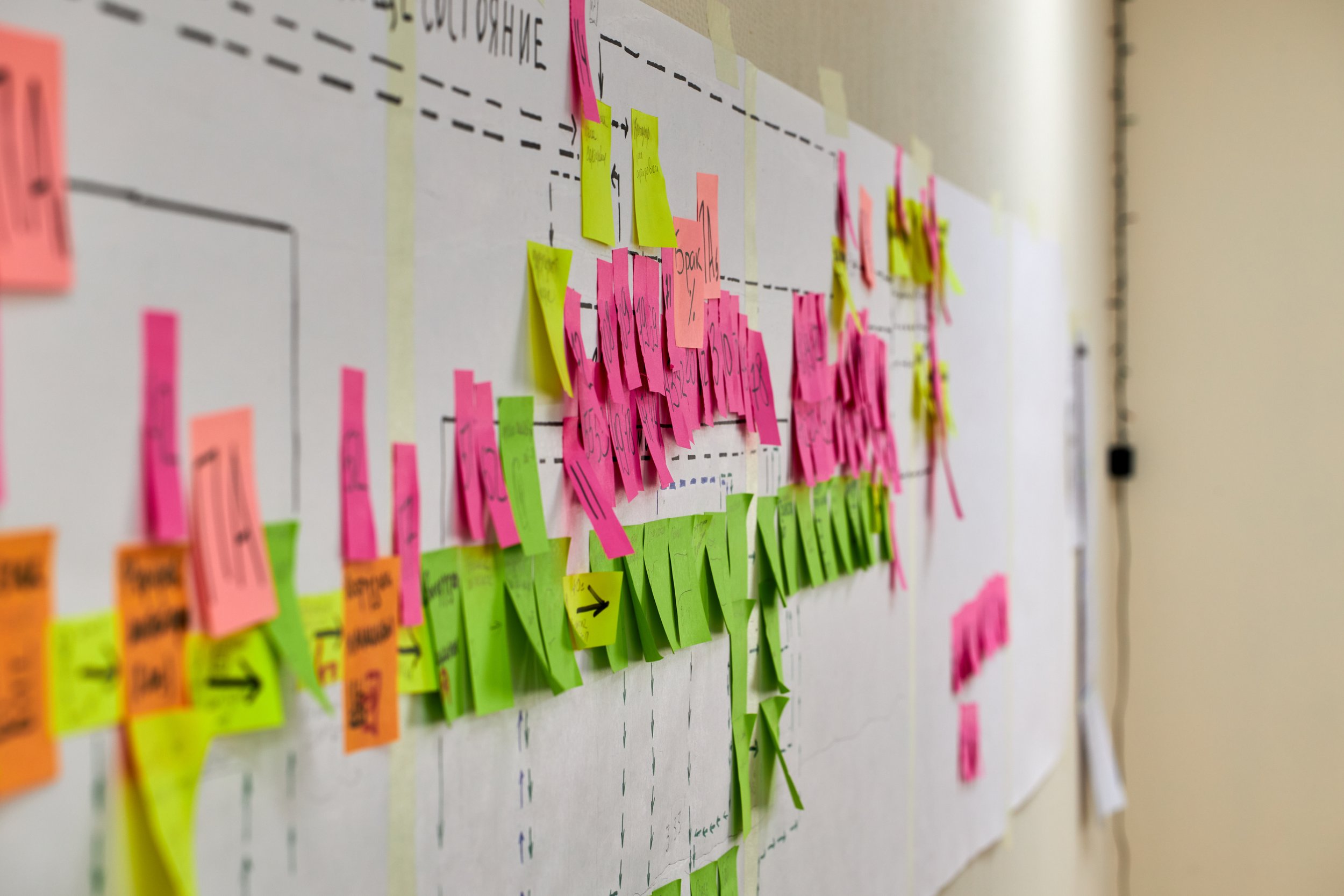Streamlining Success: Using Value Stream Mapping to Drive Focus in Commercial Organizations
A Value Stream Mapping Exercise in Action
Value stream mapping is a powerful tool for visualizing and optimizing processes, thus increasing customer value. We hope that in introducing the VSM concept, and exploring how it can support different functions within the commercial organization, our clients find ways to deploy the tool themselves and create more value for their customers.
What is a value stream map?
A Value Stream Map (VSM) is a lean tool used to visualize and analyze the flow of information, materials, or processes required to deliver a product or service to the customer. Typically in a Value Stream Map Workshop or Kaizen, a group of stakeholders will gather to build the process for a specific part of the business. This can cover all sorts of processes, but it always has a definitive starting and ending point, with all the steps in between. At times we have seen processes such as a customer journey or the product development process, as examples. Once you have the process mapped, you can leverage the data/customer feedback/gemba at each step of the process to understand where the breakdowns are, and where the key points of value exist across the process. In the context of commercial functions such as marketing or sales, here are some examples to demonstrate how it applies:
Sales/Marketing Functions:
Purpose: Identify inefficiencies in the customer acquisition journey and optimize lead-to-sale processes.
Key Elements:
Lead Generation Flow: Maps the journey from initial lead capture to conversion, including steps like campaign execution, lead scoring, nurturing, and sales handoff.
Customer Touchpoints: Highlights all interactions (emails, calls, ads, etc.) and evaluates their effectiveness in moving prospects through the funnel.
Bottlenecks: Identifies delays or gaps, such as slow follow-ups or low-quality leads, that hinder sales efficiency.
Metrics: Tracks key performance indicators (KPIs) like conversion rates, lead response times, and campaign ROI.
Outcome: A streamlined process that reduces waste (e.g., unqualified leads) and improves alignment between marketing and sales functions.
Product Functions:
Purpose: Optimize the product development and delivery process to ensure value is delivered efficiently to the customer.
Key Elements:
Idea to Launch Flow: Maps the journey from product ideation, development, and testing to launch and market feedback.
Customer Value: Focuses on ensuring that every step adds value to the end user, eliminating unnecessary or redundant tasks.
Cross-Functional Collaboration: Highlights collaboration points between product, marketing, and sales teams (e.g., aligning product positioning with market demands).
Metrics: Tracks time-to-market, feature adoption rates, and customer satisfaction post-launch.
Outcome: A more agile and responsive product function that aligns with customer needs and market opportunities.
In both cases, the Value Stream Map helps to:
Visualize the current state of processes.
Identify inefficiencies or "waste" (e.g., delays, redundancies, misalignments).
Design an improved future state that enhances efficiency, reduces costs, and maximizes customer value.
Practical Application
Are you considering running a VSM for yourself? Here are some of the key steps to take:
Build concensus, define success, start and end points and key stakeholders through a charter. The charter should be agreed to across the team and with leadership stakeholders.
Before the event: Gather all relevant data, go to “Gemba” and gather as much feedback about the process as possible. If you will want to test your future state during the event, set-up meetings for the second half of the week to “try-storm” your ideas.
During the event: Start by mapping your current state. We recommend using sticky notes to document each step of the current process. Once this is complete, go through the process with the lens of bottlenecks and waste, noting those and including any evidence you have.
Design the Future State: Develop an optimized process that eliminates waste and enhances value delivery.
At the end of the event, you will turn your attention to implementing changes or defining your priority areas of focus moving forward. Often a VSM highlights other process issues that also need to be solved - so aligning on priorities and timing is key to sustainment.
Case Study/Example
A financial services firm targeting high-value enterprise clients lacked a structured approach for engaging their top-tier accounts, leading to missed opportunities and inconsistent results. GrowthGenius worked with the client to conduct an Initial Diagnostic to identify gaps in account targeting and engagement strategies. We did this by walking through the buying journey for a large account that would be deemed a “top tier” account. Through this process, we found breaks in the customer journey, and were able to design a tailored Account-Based Experience (ABX) Program for the client. As part of the sustainment of the new process, the team trained the sales and marketing teams on personalized outreach, campaign creation, and metrics tracking for key accounts, as well as putting specific key account metrics in place for long-term focus and sustainment. The client experienced increased engagement with top-tier accounts by 30% within 3 months. They also saw improved pipeline velocity and increased deal size for high-value clients.
Interested in exploring how GrowthGenius can support your team with deploying VSM to achieve your strategic goals? We’d love to connect! Complete the form below and someone from our team will be in contact!

